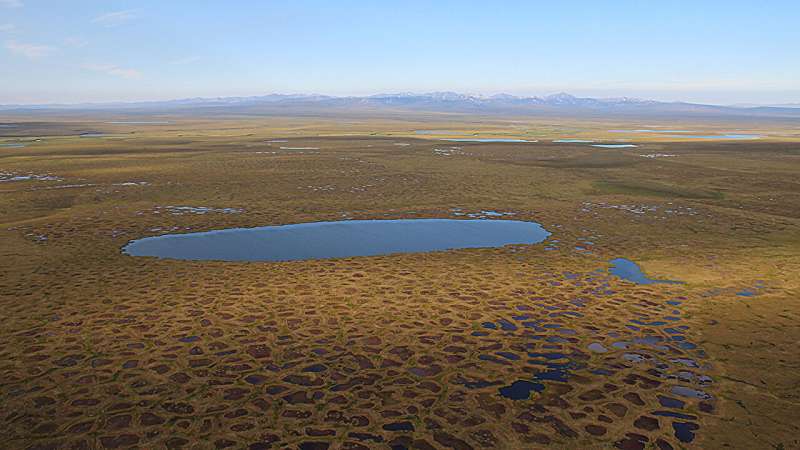Northern permafrost region emits more greenhouse gases than it captures, study finds

Permafrost underlies about 14 million square kilometers of land in and around the Arctic. The top 3 meters contain an estimated 1 trillion metric tons of carbon and 55 billion metric tons of nitrogen. Historically, the northern permafrost region has been a sink for carbon, as frozen soils inhibit microbial decomposition. But rising temperatures contribute to thawing permafrost and enhance the biogeochemical activities that exacerbate climate change by releasing greenhouse gases such as carbon dioxide (CO2), methane (CH4), and nitrous oxide (N2O).
Data on how much this region will—or already has—affected the course of climate change are difficult to gather due to the complexity of the landscape. The study, published in Global Biogeochemical Cycles, synthesized greenhouse gas measurements of the northern permafrost region between 2000 and 2020 to provide a carbon balance for the region, as well as the first comprehensive assessment of the quantities of greenhouse gases the area takes up and emits.
The researchers' work, done as part of the Regional Carbon Cycle Assessment and Processes (RECCAP2) project, used a bottom-up approach, focusing on estimating emissions based on specific source categories. Their results suggest that the area has already shifted from a sink to a small source of carbon.
The researchers compiled many past estimates of greenhouse gas flux in various sections of the northern permafrost region to reveal how the entire area is responding to climate change. They found that the study area was a net source of CH4 and N2O between 2000 and 2020.
Wetlands were some of the largest methane emitters, and lakes contributed substantially as well. Dry tundra was the biggest driver of N2O release, and permafrost bogs were a close second.
However, the researchers were unable to say definitively whether the region was a net source or sink of CO2. Terrestrial ecosystems, particularly boreal forests, still take up CO2. But this is offset by fires, abrupt permafrost thaw, and inland waters, which emitted an estimated 12 million metric tons of CO2.
The researchers estimate that the northern permafrost region emitted 38 million metric tons of CH4 and 670,000 metric tons of N2O into the atmosphere between 2000 and 2020. When accounting for lateral fluxes such as erosion, the region was also a source of 144 million metric tons of carbon and 3 million metric tons of nitrogen. That's very little compared with the emissions of a major industrialized country, but the pace may accelerate as the world warms.
More information: Justine Ramage et al, The Net GHG Balance and Budget of the Permafrost Region (2000–2020) From Ecosystem Flux Upscaling, Global Biogeochemical Cycles (2024). DOI: 10.1029/2023GB007953
Journal information: Global Biogeochemical Cycle
Provided by Eos
This story is republished courtesy of Eos, hosted by the American Geophysical Union. Read the original story here.
No comments:
Post a Comment